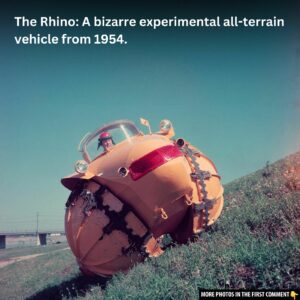In the late 1960s, the world of sports cars was dominated by Ferrari, Lamborghini, and Porsche. But in 1967, Alfa Romeo made an entrance that would leave an everlasting mark. The Alfa Romeo 33 Stradale was more than just a road car—it was a racing machine wrapped in an exquisite body, setting a new benchmark for both performance and design. Often regarded as one of the most beautiful cars ever created, the 33 Stradale remains a symbol of Alfa Romeo’s bold innovation, combining cutting-edge engineering with Italian craftsmanship. Despite its brilliance, only 18 units were built, making it one of the rarest and most coveted vintage cars in history.
A Race Car for the Road
The 33 Stradale wasn’t just inspired by racing—it was born from it. Its DNA came directly from Alfa Romeo’s Tipo 33, a race car designed for endurance racing. The goal was simple: create a street-legal supercar that delivered the thrill of motorsport while maintaining a level of comfort for road use.
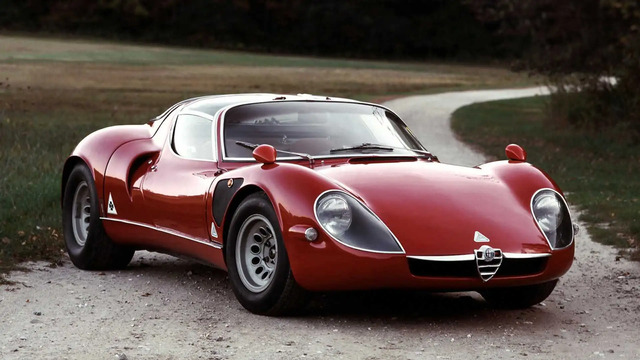
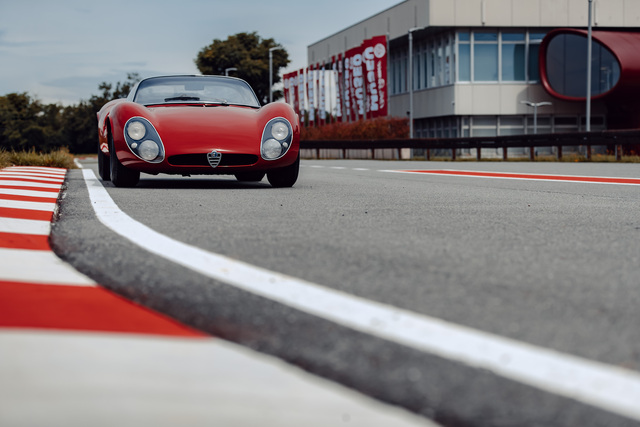
The 33 Stradale wasn’t just inspired by racing—it was born from itUnlike many supercars of its time, which were toned-down versions of racing models, the 33 Stradale retained its aggressive nature. It featured a lightweight aluminum body, a mid-engine layout, and an ultra-low stance, making it one of the fastest and most agile cars of its era. With a top speed exceeding 260 km/h (161 mph) and a 0-100 km/h (0-62 mph) time of just 5.5 seconds, the Stradale was years ahead of its competition.
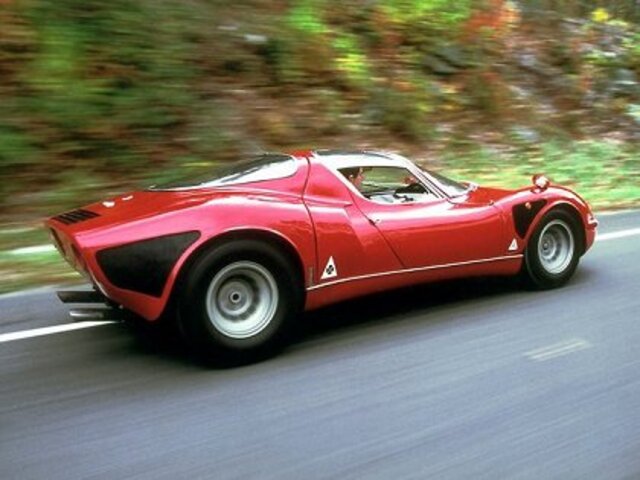
Video
Watch this captivating video on the Alfa Romeo 33 Stradale, a history of courage and innovation. Don’t miss the story behind one of the most iconic cars ever made!
Design and Innovatio
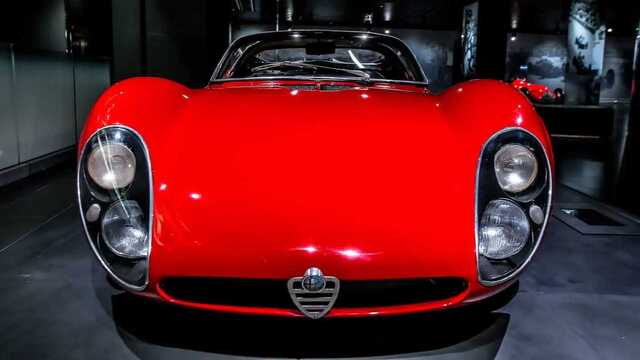
The Influence of Franco Scaglione
The timeless beauty of the 33 Stradale can be credited to Franco Scaglione, one of Italy’s greatest automotive designers. Known for his aerodynamic expertise, Scaglione sculpted a fluid, organic shape that was not only visually stunning but also optimized for performance.

Every curve on the Stradale’s body served a purpose, ensuring that airflow was efficiently managed. Its muscular rear haunches, aggressive nose, and sweeping profile made it one of the most visually balanced designs ever created. The glass-covered cabin, which seamlessly blended into the body, gave the car a futuristic and elegant look.
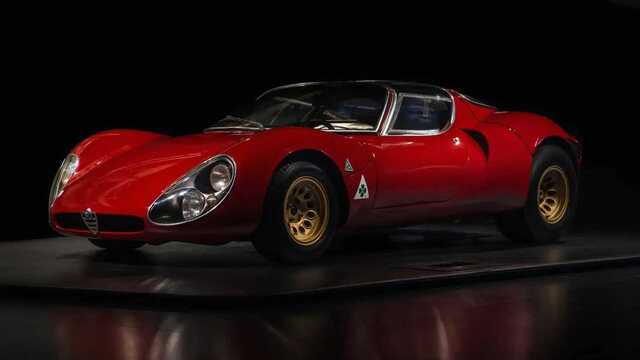

Unique Features: The Butterfly Doors and Full-Opening Cofango
The 33 Stradale introduced two revolutionary features that were unheard of in 1967:
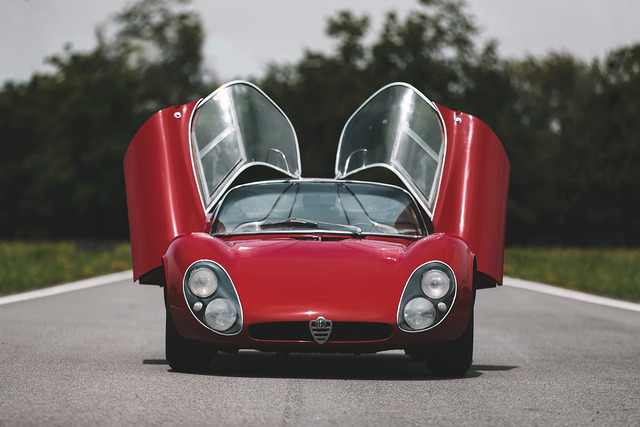
- Butterfly Doors – It was the first production car to use butterfly-style doors, which opened upwards with hinges positioned on the A-pillar. This gave the car an exotic presence while also making it easier to enter.
- Full-Opening Cofango – The entire front and rear sections of the car could be lifted open, allowing complete access to the mechanical components. This wasn’t just for aesthetics; it made servicing the car incredibly easy—something rarely seen in road cars of the era.

Engineering Marvel: The 2.0-Liter V8 Engine
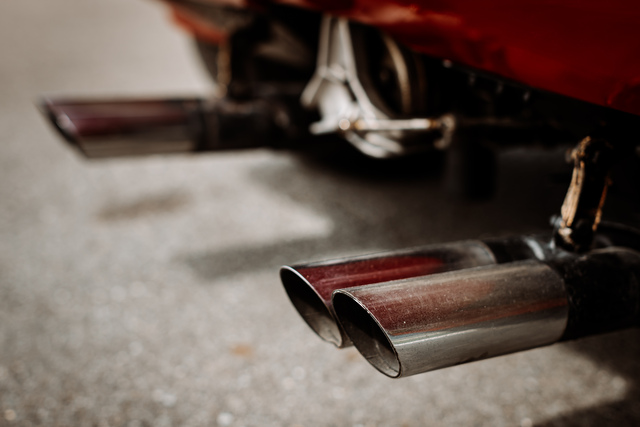
Underneath the 33 Stradale’s stunning body was an engineering masterpiece—a 2.0-liter V8 engine that was directly derived from Alfa Romeo’s Tipo 33 race car. The engine was built using aluminum and magnesium alloys, making it extremely lightweight and durable.
With 227 horsepower at 8,800 rpm, the Stradale produced one of the highest power outputs per liter of any car at the time. Power was sent to the rear wheels via a six-speed Colotti transaxle, ensuring precise handling and a thrilling driving experience.
Despite its small displacement, the high-revving nature of the V8 gave the car a raw and intoxicating sound, often compared to Formula 1 engines of the era. Its acceleration, agility, and top speed put it on par with Ferrari and Lamborghini models, cementing its place as a true supercar.
Rare and Exclusive: Production and Variants
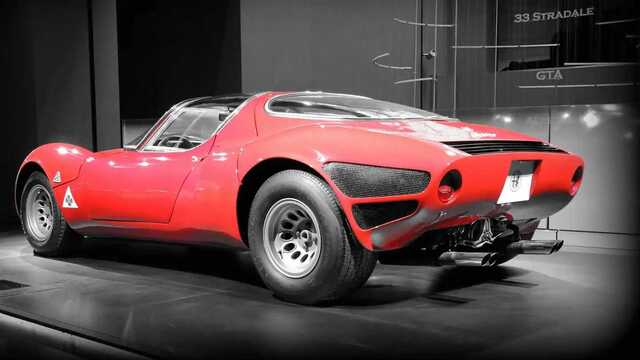
Unlike modern supercars, which often have thousands of units produced, only 18 examples of the 33 Stradale were ever built. Each unit was handcrafted by Carrozzeria Marazzi, meaning no two cars were exactly the same. Some units had single windshield wipers, while others had dual wipers. Early prototypes also featured dual headlights, which had to be changed to single headlamps to comply with regulations.
In addition to the road-going versions, five chassis from the 33 Stradale were used as the foundation for legendary concept cars, including:
- Alfa Romeo Iguana (Italdesign – Giorgetto Giugiaro)
- Alfa Romeo P33 Roadster (Pininfarina)
- Alfa Romeo 33.2 Coupe Speciale (Pininfarina)
- Alfa Romeo Cuneo (Pininfarina)
- Alfa Romeo Carabo (Bertone)
These designs influenced future supercars, including the Lamborghini Countach and the Lancia Stratos, further proving the Stradale’s significance in automotive history.
Influence on Automotive Design
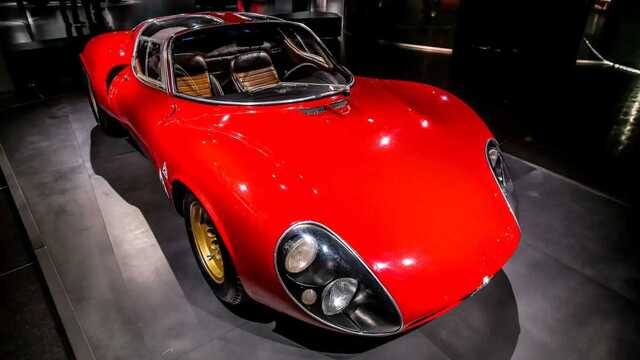
Despite its limited production, the 33 Stradale left an undeniable mark on car design. Alfa Romeo’s modern 4C sports car takes direct inspiration from the Stradale’s elegant yet aggressive styling. The butterfly doors, lightweight construction, and mid-engine layout also influenced many future supercars, including models from Ferrari, McLaren, and Lamborghini.
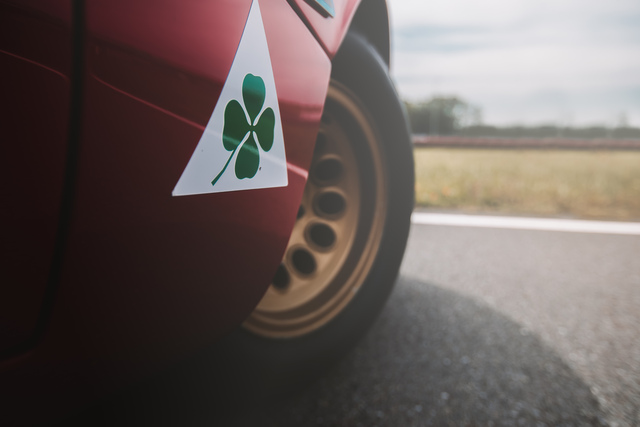
Beyond its design, the Stradale’s combination of racing performance and road usability paved the way for later supercars like the Ferrari F40, McLaren F1, and Porsche Carrera GT. It proved that a race car could be adapted for the road without losing its soul.
Legacy and Lasting Impact
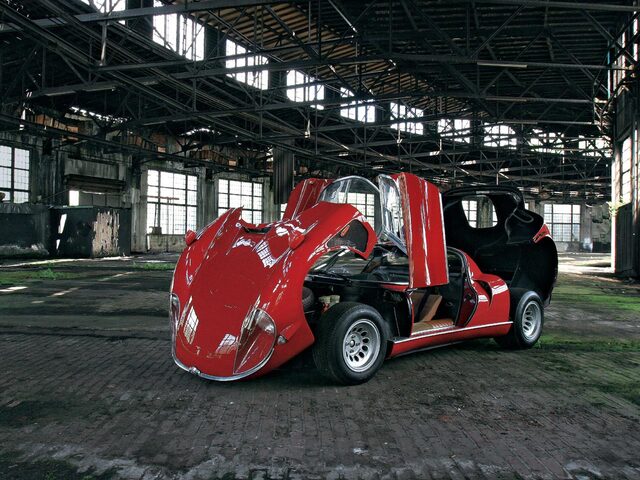
Today, the Alfa Romeo 33 Stradale is regarded as one of the most beautiful and valuable cars ever built. Its scarcity and historical importance have made it a highly sought-after collector’s item. When one appears at auction, prices easily exceed millions of dollars, reflecting its legendary status.
Beyond its value, the 33 Stradale remains a symbol of an era when cars were designed with passion, creativity, and engineering brilliance. It represents a time when automotive design was as much an art form as it was a science, something that modern cars often lack.

Video
Check out this video on the Alfa Romeo 33 Stradale, where we dive into the process of crafting a true masterpiece. Watch and see the artistry behind this legendary car!
Conclusion: A Supercar for the Ages
The 1967 Alfa Romeo 33 Stradale was not just another sports car—it was a masterpiece that combined cutting-edge racing technology with breathtaking beauty. It set a new standard for supercar design, influencing generations of cars that followed.
More than 50 years later, the 33 Stradale remains one of the most admired and celebrated cars in history. It is a reminder of Alfa Romeo’s golden era, a time when passion and artistry shaped the world of automotive engineering.
For car enthusiasts and collectors alike, the 33 Stradale is the ultimate dream car, proving that great design and innovation are truly timeless.



